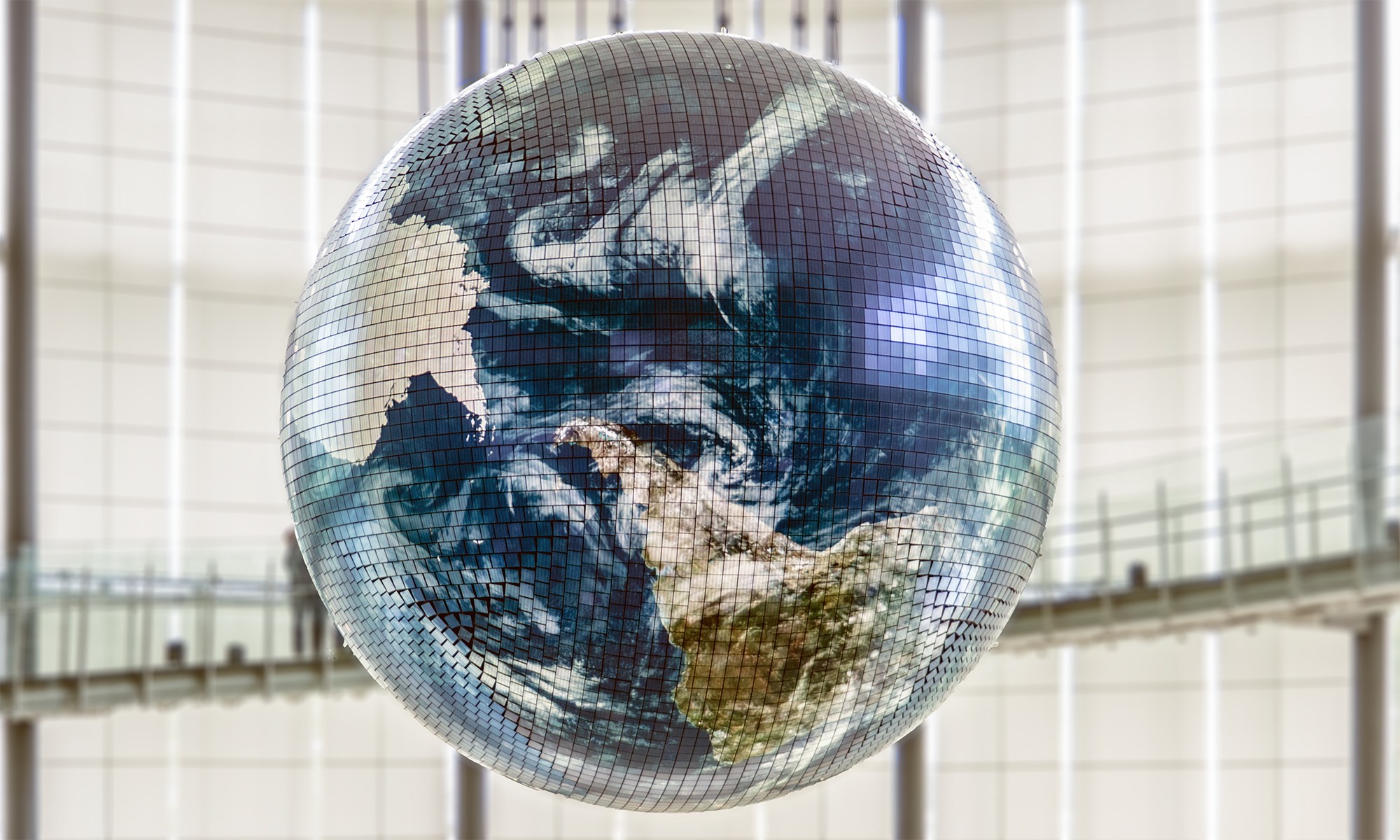The congestion of low orbits caused by the growing number of private satellites compromises the possibilities of astronomical observation from Earth and calls into question the meaning of “space policies” by Andrea Monti Initially published in Italian by La Repubblica – Italian Tech
A study by Canada’s Western University released on 17 June 2025 contains an analysis of data from a year of satellite passes within national borders, documenting tens of millions of crossings in a photograph with enormous evocative power.
In black and white, the image depicts the trajectories of satellites as if they were the weave of a frayed fabric or the web of a silkworm, conveying the perception of a Earth suffocated by a veil that is becoming increasingly thick, dense and suffocating.
Obviously, this is an optical illusion: the astronomical images are taken with cameras that “follow” the object to be photographed and are set with very long exposure times. This method consists of leaving the camera shutter open so that light can strike the sensor for long enough. The result is that the photograph captures the entire movement as a streak of light rather than a single moment. Furthermore, not all satellites cross the same portion of the sky at the same time. So there is no canvas enveloping our planet, but the image illustrating the Canadian study is much more evocative than the sparkling swarm displayed by websites that provide real-time information on the position and number of satellites orbiting above our heads.
This lengthy introduction serves to introduce two crucial issues that characterise the colonisation of what we pompously call “space” but which in reality is still an area outside but still connected to Earth (the Moon, Mars and other celestial bodies are another matter).
Light pollution blinds telescopes
The first concerns the consequences of orbital congestion. The myriad satellites surrounding the Earth are progressively compromising the efficiency of astronomical observation. For years, scientists have been sounding the alarm — unheeded — about the consequences for research of light pollution caused by satellite overcrowding and debris from collisions with other orbital objects. But this progressive blinding does not only affect the artificial eyes of telescopes, because human eyes are also doomed to the same fate. This is not a romantic and outdated lament, perhaps inspired by the wandering shepherd of Asia who sees the possibility of addressing his questions to the “silent and useless moon in the sky” at risk, but a serious anthropological issue concerning our ancestral relationship with the night and with space, admirably recounted by Isaac Asimov in Nightfall.
Space is already militarised and exploited economically
The second concerns the confession of failure — or hypocrisy — of the “Treaty on Outer Space” of 1967, which “prohibited”, but only on paper, the militarisation of the sky and its economic exploitation. With all due respect to legal formalism, neither has ever stopped, so much so that, with hindsight, it seems that the agreement signed under the auspices of the UN was not so concerned with “space freedom” but was rather a kind of armed truce between the only two countries —the US and the USSR—capable of occupying this new strategic domain at the time.
The scenario changes with the entry of two new categories of competitors: the “emerging states” claiming the right to their own space programmes (the EU is unjustifiably absent, despite its proclamations), and Big Tech such as Starlink (Elon Musk) and Project Kuiper (Jeff Bezos). While academics discuss the “space economy” and governments can count on little more than one hand the number of satellites they could launch, Big Tech is systematically occupying all the “space” (the real one) it can with its orbiting objects and technologies. To add insult to injury, it does not even have to pretend to comply with the 1967 Treaty.
The consequences of the strategic blindness of executives and the EU
The result — like it or not — is that we have to come to terms with these “private governments” unless we want to embark on a massive expropriation of technologies and infrastructure.
It is obvious that such an option is not even at the bottom of the list of possibilities, but it is also clear that continuing to ignore the factual reality determined by the historical lack of interest of governments in the upper atmosphere and beyond favours the consolidation of economic, technological and strategic balances in which the European Union is not a player, counterweight or fulcrum.
Overcoming the Outer Space Treaty
A first step towards (attempting to) reverse this trend is to overcome the Outer Space Treaty and assert sovereignty over the portions of orbits that cross the territory of each state, as is the case with airspace. From there, we could start to re-establish the balance between public authorities and (what should be only) private companies.
Overcoming the Treaty would make it possible to re-discuss, without anti-historical limitations or assumptions based on outdated ideologies, the issue of the exploitation of celestial bodies and their resources. This, however, must be done with the awareness that the only ones who can effectively have a say are those who control the entire supply chain, from the construction of launch vehicles, satellites and spacecraft to the ownership of launch sites and fuels. The others, however skilled they may be at building parts and components, must decide whether to enter the competition fully, acquiring the right to set conditions at the international negotiating table, or to remain where they are, once again subject to choices made by (and in the interests of) others.
